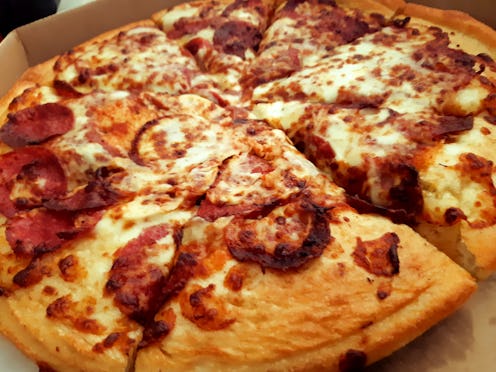Life
The Actual Origins Of 11 "American" Foods

When we say we're in the mood for some classic American food, usually we're not actually talking about American food. Most of the dishes that we recognize as truly American — you know, the kinds of things we eat at birthday parties, sporting events, fairs, and adventure parks — are not all American. What makes them American is that we love them so much and have embraced them like our own. But really, they're mostly Americanized remixes and renditions of international fare. Some dishes have been so far removed from their original ingredients and serving style that they're no longer considered to be of their international origin.
Because so many of our most popular dishes appear to be the creations of drunk college students, it's interesting to look at each dish and see how it came to be what is is now. Especially considering the fact that we're currently in the midst of a culinary revolution where we're breaking rules and creating hybrids and combinations of everything. Like, who are we going to credit Ramen Pizza to? And what about Broccoli latkas? Now that Americans are more involved in their meals than ever, we might be seeing a huge extension added to the list of foods we consider to be purely American. These are some of our most popular American dishes, some of which are not entirely American.
Clam Chowder
Purely American! This clam, potato, onion, celery and cream soup was developed in New England and prevails in many variations.
Pizza
If you're in a serious relationship with pizza, you've probably already heard its life story. But for those of you who haven't asked pizza about itself, it's a variation of an Italian dish. While lots of early civilizations made flat breads with toppings, Italy was the first to use the toppings that we recognize as pizza ingredients today: cheese, sauce, vegetables and meat.
Hamburger
While burgers might seem so American they deserve a spot on the flag, they're actually German. They come from Hamburg, hence the name. They were made from Hamburg steak in the late 1800s, but only became the toppings platform they are today in America. So we can take a little bit of credit.
Chicken Fingers
This one is ours. In the early 1900s we started breading and frying chicken strips to simply make them taste better. It was not always easy to get high quality white meat and red meat was sometimes a gamble. So chicken fingers allowed people to get not-so-great cuts of chicken and amp up their flavor with some American fixings.
Grilled Cheese
In the early 1900s, the French came out with the croque monsieur, which is the closest thing we have to a clear origin for the classic grilled cheese sandwich as we know it. However, it was our invention of processed cheese slices that made grilled cheese so affordable, attainable, and easy.
Apple Pie
The first apple pie recipe came from England in the 1300s. Apples did not even grow here when people first began to settle. Apple pie became popular among the Dutch almost a century before it became popular here.
Chocolate Chip Cookies
Ours! In the 1930s, we created the chocolate chip cookie as we know it today. Sure, there were chocolate cookies and pastries in Europe for a century prior, but the separated chips floating in that half white sugar, half brown sugar, buttery dough, that's all us.
Donuts
The Dutch brought the donut here. They knew it as an oil cake, or oliekoek, which basically means it's a piece of cake fried in fat. There's no sugar coating that description, it is what it is.
Hot Dogs
Nope, not ours. Some people believe it was originally a dish that a Roman emperor prepared. Most people know it as what made its way to Frankfurt, Germany. Germans enjoyed their sausages pickled toppings and bread. Hence, buns and relish today.
Mac & Cheese
Technically, while pasta and cheese dishes were brought over from Italy, what we know as mac and cheese is mostly ours. That processed, gooey, oozing, cheese and small elbow noodle combo is all-American.
PB & J
Peanut butter spread has been around for a while. It wasn't until World War II that U.S. soldiers added jelly to the mix. Jelly cut through the stickiness of the peanut butter and made it an easier meal to swallow. By the time soldiers returned from the war seeking out the foods they had eaten during it, this sandwich had become a new American staple.
Images: Clichy Ephraim / EyeEm/EyeEm/Getty Images, Giphy